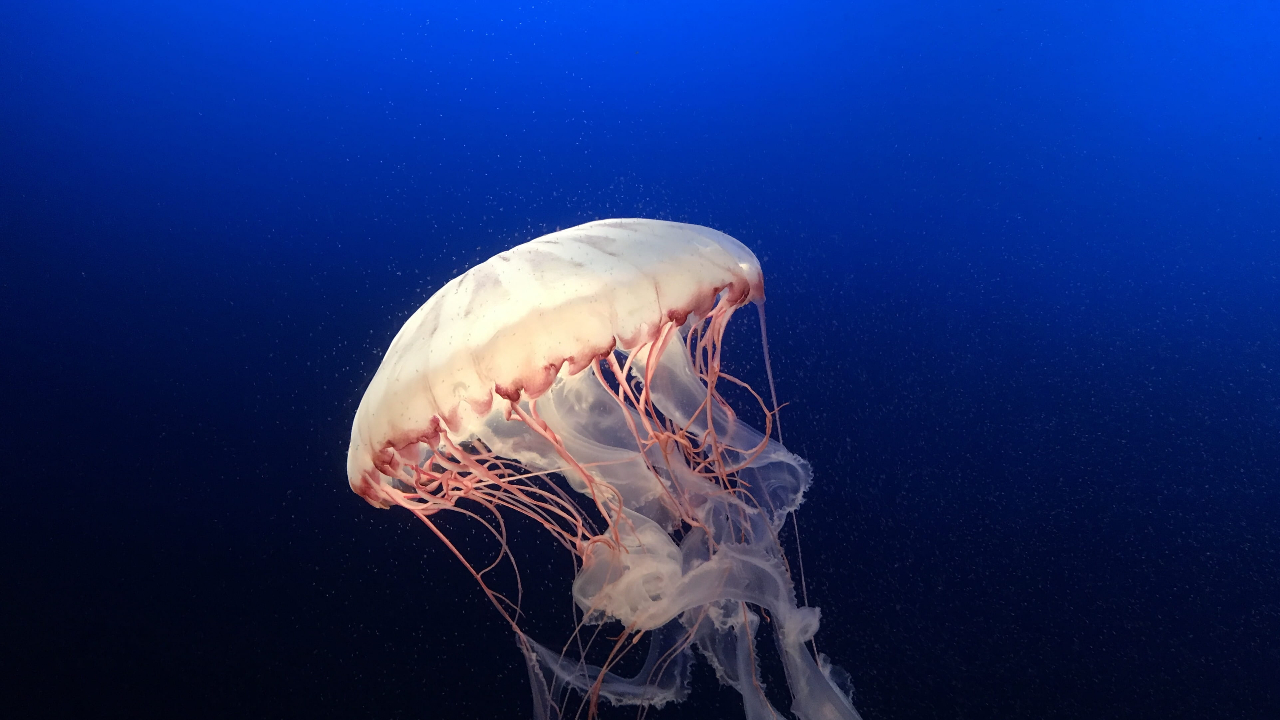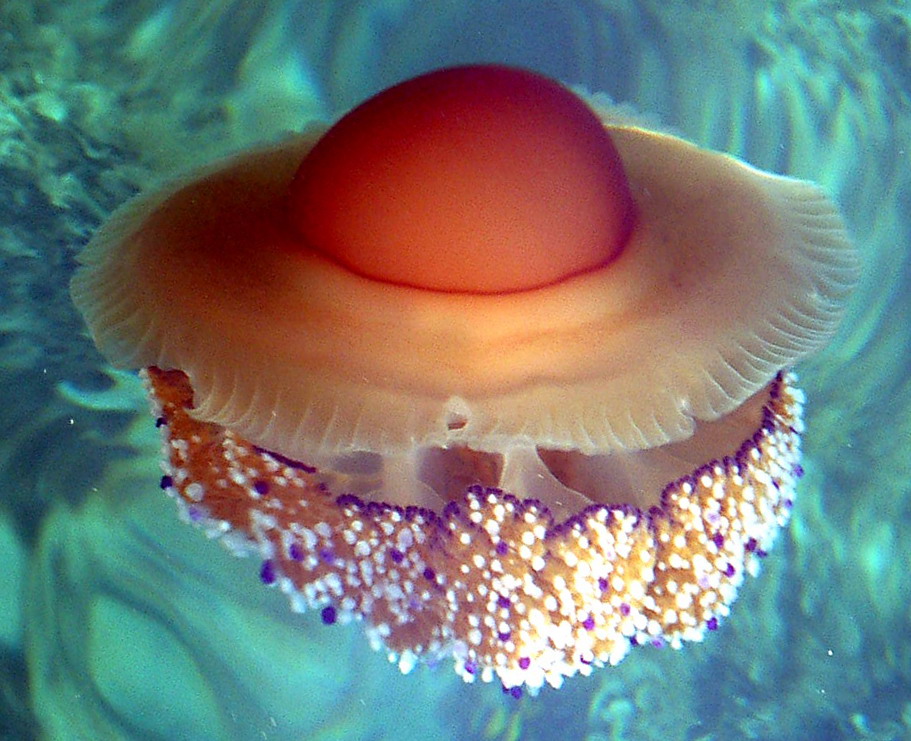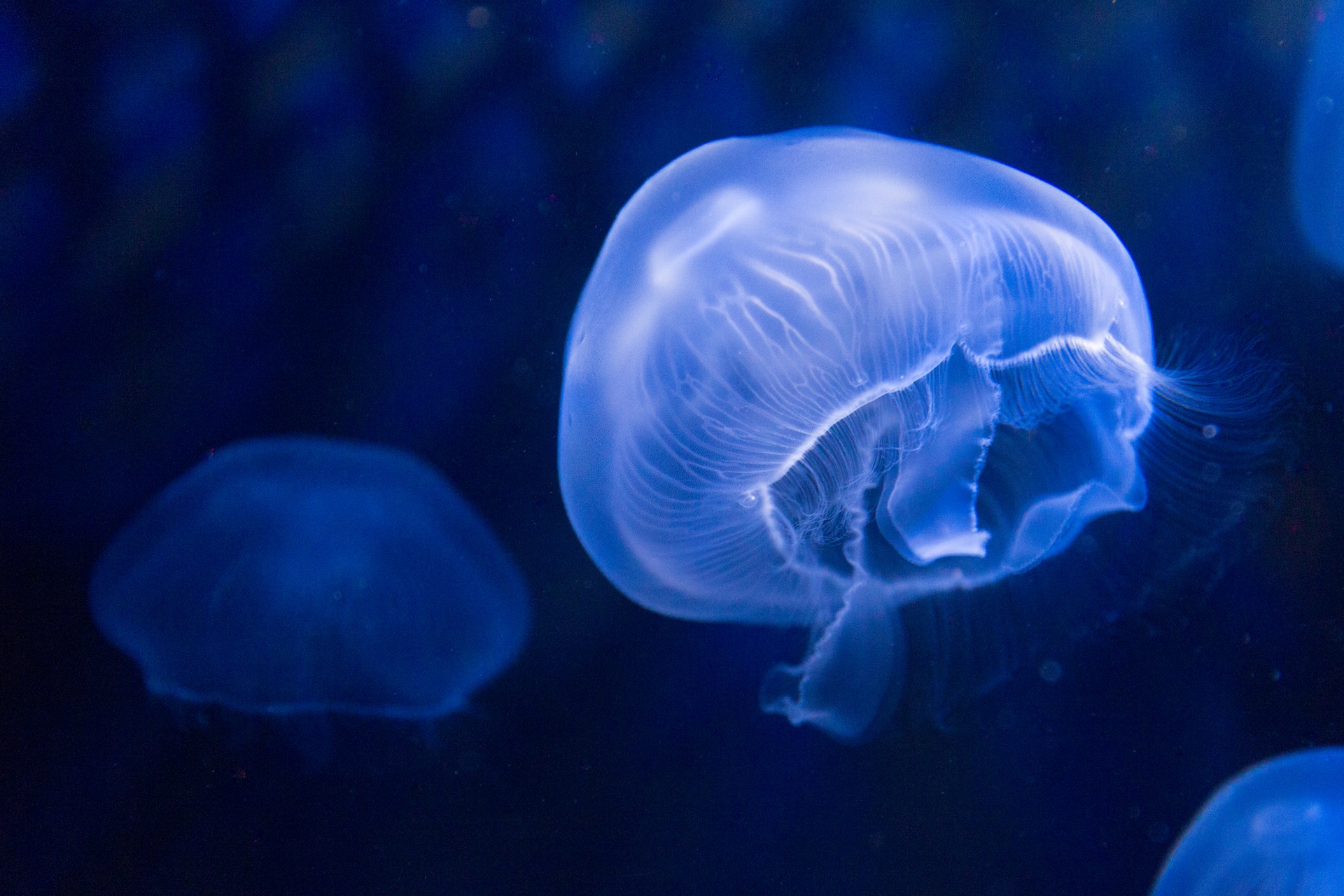Within the animal kingdom, jellyfish are one of the animals that impress us the most, but they also scare us because there are types of jellyfish that are dangerous to humans (practically all). Their shapes and colors, the abilities they have, as well as the way they live, will catch your attention.
Taking into account that there more than 1.500 species of jellyfish, talking about all of them can be almost impossible. But we do want to help you to know which are the most representative, or those that really stand out. Do you want to discover them?
jellyfish families

Jellyfish, scientifically named medusozoaThey are animals with a gelatinous body. Its usual shape is a bell, from which tentacles and a "tubular handlebar" hang. However, there are species whose morphology differs in this sense.
All jellyfish species are classified into four large families that would encompass the different specimens. So, you have the following: Stauromedusae, Hydrozoa, Cubozoa; and Scyphozoa. Let's look at them in a little more detail.
[related url=»https://infoanimales.net/jellyfish/jellyfish-sting/»]
Types of jellyfish: Stauromedusae
These types of jellyfish are approximately five centimeters in size, and can reach up to 15 in some cases. You can find them in the Atlantic Ocean and they live in cold and deep waters; in addition, there are some in the Indian Ocean.
Their diet is based on small fish (no larger than two centimeters), as well as plankton.
In this family you can find 5 families of jellyfish, with 14 genera and a total of 50 types of jellyfish.
- Family Lucernariidae Johnston. It includes the subfamily Lucernariinae Carlgren, with a total of 28 different species of jellyfish. Among them, we highlight: Lucernaria OF Müller, Lucernaria quadricornis, Haliclystus James-Clark, Stenoscyphus Kishinouye, Stylocoronella Salvini-Plawen…
- Family Kishinouyeidae Uchida. With a total of 13 types of jellyfish. The best known of this family are: Sasakiella Okubo, Lucernariopsis Uchida, Kishinouyea Mayer, Lucernariopsis tasmaniensis Zagal (the latter found in 2011, one of the most current discovered).
- Family Kyopodiidae Larson. With only two species of jellyfish, the Kyopoda Larson, and the Kyopoda lamberti Larson.
- Family Lipkeidae Vogt. With four types of jellyfish: Lipkea Vogt, Lipkea ruspoliana Vogt, Lipkea stephensoni Carlgren; and Lipkea sturdzii.
- Family Depastridae Haeckel. Divided into three subfamilies, the Depastrinae Uchida, with 4 species, including the Depastromorpha Carlgren, and the Depastrum Gosse; the Thaumatoscyphinae Carlgren subfamily, with 10 types of jellyfish, including Halimocyathus James-Clark, or Manania James-Clark; and the Craterolophinae Uchida subfamily, with 3 species, including Craterolophus James-Clark.
Hydrozoa
They are divided into five Orders, several of them with some suborders. So, you have the following:
- Order Hydroida, with the suborders Anthoomedusale, Leptomedusae, and Limnomedusae. They are those that form colonies and have a more common form of jellyfish.
- Order Trachylinae, with suborders Laingiomedusae, Narcomedusae, and Trachymedusae. They are characterized by having a different life cycle than other types of jellyfish, since they have a multicellular phase, and a unicellular one.
- Order Siphonophora. They also form colonies but are floaters.
- Order Chondrophora. Not as dangerous as the previous ones, they are capable of forming part of colonies.
- Order Actinulide. These are very small, solitary specimens that you do not associate with jellyfish because they do not have their usual shape.
Types of Jellyfish: Cubozoa
They are commonly called sea wasps and are characterized by having a rather dangerous poison. They are cubic in shape and closely resemble the Scyphozoa types of jellyfish. Currently, there are no more than 40 species of this family. They usually live in Australia, the Philippines and tropical areas.
Specifically, they are divided into two families: Chirodropidae, with 7 species; and Carybdeidae, with 12 species.
Scyphozoa
They are what are normally considered jellyfish. They can measure between 2 and 40 centimeters in diameter and weigh up to 40 kilos. In some species, such as Cyanea capillata, it can reach 2 meters in diameter (and some tentacles between 60 and 70 centimeters).
It is estimated that in this family there will be encompassing about 200 different species.
Most original types of jellyfish
Next, we want to talk to you about some of the most original types of jellyfish that you can find in the sea. Some of them are common in Spain, while others are more difficult to see.
jellyfish fried egg

Also called Mediterranean jellyfish. This original name is due to its shape. And it is that, at first glance, it looks like a fried egg, with an orange part (the yolk) in the center, and a lighter part (the white) around it. They measure between 20 and 40 centimeters and it is one of the most showy, in addition to the fact that its movement attracts a lot of attention.
Lives in the Mediterranean Sea and the poison it has is not dangerous for humans, although if it itches you will notice itching and skin irritation.
[related url=»https://infoanimales.net/jellyfish/jellyfish-most-dangerous/»]
wasp jellyfish
This is one of the most dangerous types of jellyfish. It is also called box jellyfish, or cube jellyfish, and is one of the most poisonous in the world. Unlike others, the wasp jellyfish moves due to some folds it has, which make it possible for it to move wherever it wants (unlike the others, which move according to the currents).
is known to have some 24 eyes in the umbrella and that it can use them to find prey, or to see light and dark areas in order to orient itself. It can have a size of more than 3 meters in length (and 25 centimeters in width), as well as a weight of about 2 kilos.
Portuguese Caravel
It is one of the best known in the world, and usually stays on the surface of the water, letting its tentacles float below. With a very unique shape, since she looks like a ship with a big sail, what is certain is that she is one of the most dangerous and poisonous jellyfish, with quite strong pain, and even scars in the event that it stings you.
[related url=»https://infoanimales.net/medusas/medusas-portuguesas/»]
The tentacles can reach 50 meters in length while their width is not too great (just a few centimeters).
One of the most incredible aspects is its color, since it is blue, with some shades of purple, lilac or fuchsia.
lion's mane jellyfish
The lion's mane jellyfish is considered the largest in the ocean, reaching 2 meters in diameter of its umbrella and more than 40 meters in length (some even reach 80 meters). In addition, the appearance it has resembles what a lion's mane would be.
Unlike other jellyfish, its tentacles are distributed in a total of 8 clusters, and thousands of tentacles come out of them as if they were a tangle. In addition, they can have a color typical of a lion, with red, yellow, purple tones...
Its venom is not fatal to humans, but it is very harmful, even leaving marks from its bite. Some have even died due to having encountered a jellyfish of this type.


